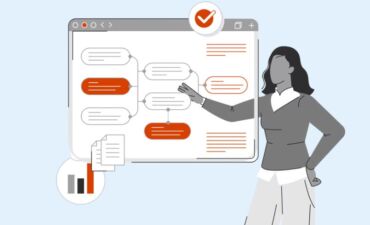The new lease standard requires almost all leases to be recorded on the balance sheet. But what is the definition of a lease?
While many of the changes to lease accounting brought about by the new lease standard require substantial analysis and consideration, the process begins with first identifying whether a contract is (or contains) a “lease” under ASC 842. This may sound like a simple task but in fact, it requires substantial analysis and a clear definition of a lease.
Is it a lease? This is a simple question, but what does it really take to arrive at the correct answer? Since the FASB issued Accounting Standards Update 2016-02, Leases, or “Topic 842,” practitioners across a wide spectrum of industries have been putting a lot of effort into determining how best to arrive at the correct answer for accounting purposes. Proper analysis is important, as once a lease has been identified, it must be recorded on the balance sheet and the lease must be subsequently accounted for using the guidance in Topic 842. Improperly characterizing an arrangement as a service contract instead of a lease or not identifying a lease component in an arrangement could lead to a material misstatement on a company’s balance sheet.
Definition of a Lease
So, what does it take to determine whether an arrangement is (or contains) a lease? Let’s begin with the technical definition of a lease, as defined in the standard:
A contract is or contains a lease if the contract conveys the right to control the use of identified property, plant, or equipment (an identified asset) for a period of time in exchange for consideration. A period of time may be described in terms of the amount of use of an identified asset (for example, the number of production units that an item of equipment will be used to produce).
What is an Identified Asset?
Let’s begin to break down the definition of a lease. The first question should be, “Is there an identified asset?” Identification of an asset is generally analyzed by looking for an asset explicitly identified in a contract. However, at times, an asset may not be explicitly identified. For example, if the supplier has only one asset available to satisfy the contract with its customer, an implicitly identified asset exists.
Another important factor we must consider is the concept of “substantive substitution rights.” Once an asset has been identified (explicitly or implicitly), we need to consider whether the supplier has a substantive right to substitute the asset throughout the period of use. A supplier is said to have a substantive substitution right when both of the following conditions exist:
-
- The supplier has the practical ability to substitute alternative assets throughout the period of use and
- The supplier would benefit economically from exercising its right to substitute the asset.
The existence of a substantive substitution right calls in to question whether there is an identified asset, and therefore, whether a “lease” exists.
What is Control?
The next question should be: “Does the contract convey the right to control the use of the identified asset?” Based on the definition of a lease, we know that the conveyance of “control” plays a role but that begs the question, “How is control defined?” According to the standard:
To determine whether a contract conveys the right to control the use of an identified asset a period of time, an entity shall assess whether, throughout the period of use, the customer has both of the following:
-
- The right to obtain substantially all of the economic benefits from use of the identified asset
- The right to direct the use of the identified asset
So in practice, in order to determine whether a contract is or contains a lease, we must first determine whether there is an identifiable asset and then determine whether the two components of control have been met.
Let’s analyze the first component of control: “Does the customer have the right to obtain substantially all of the economic benefits from the use of the identified asset?” An important point of analysis when we evaluate this is to understand what the defined scope of a customer’s right to use an asset is. For example, if a customer has the right to use a truck but the contract specifies that the total mileage the customer can drive the truck for is limited to 50,000 miles, we must only analyze whether the customer has the right to obtain substantially all of the economic benefits within the scope of driving the 50,000 miles.
Now, let’s take a look at the second component of control: “Does the customer have the right to direct how and for what purpose the identified asset is used throughout the period of use?” According to the guidance, a customer does have the right to direct how and for what purpose the asset is being used if either of the following conditions exist:
-
- The customer has the right to direct how and for what purpose the asset
is used throughout the period of use or - The relevant decisions about how and for what purpose the asset is used are predetermined and at least one of the following conditions exists:
- The customer has the right to direct how and for what purpose the asset
-
-
- The customer has the right to operate the asset (or to direct others to operate the asset in a manner that it determines) throughout the period of use without the supplier having the right to change those operating instructions or
-
-
-
- The customer designed the asset (or specific aspects of the asset) in a way that predetermines how and for what purpose the asset will be used throughout the period of use.
-
One thing to keep in mind, however, is that the supplier can prohibit the customer from using the asset in a way that would be illegal or dangerous. This type of supplier-imposed restriction would not have any impact on condition a) or b) above. This restriction would be incorporated into the contract as a way of protecting the supplier’s interest in the asset and is known as a “Protective Right.”
Let’s Analyze!
Let’s take a look at an example to pull it all together. In this scenario, a customer enters into a contract to use a truck for a period of five years. The truck is explicitly specified in the contract and the supplier does not have the right to substitute the truck. The customer decides where the truck will be driven, what cargo will be transported and when the truck will be used. The supplier does, however, note some restrictions in the contract, specifically, that the customer cannot haul explosives in the truck. Now, let’s analyze whether the contract is or contains a lease.
The first question is, “Is there an identifiable asset?” Yes, the truck is an identifiable asset.
The next question is, “Does the supplier have substantive substitution rights?” No, the supplier does not have the right to substitute the truck.
Now, let’s take a look at the elements of control. “Does the customer have the right to obtain substantially all of the economic benefits from the use of the asset?” Yes.
“Does the customer have the right to direct how and for what purpose the identified asset is used throughout the period of use?” Yes, we meet the criteria above: The customer has the right to direct how and for what purpose the asset is used throughout the period of use.
Note that the supplier’s requirement that the customer not haul explosives in the truck is a protective right and does not impact the customer’s element of control. In this scenario, the contract is a lease.
Now, let’s change the scenario a bit. Assume the same facts as above, except that the supplier has a right to substitute the truck. We have to analyze the contract further to decide whether the supplier has a substantive substitution right. As noted above, a supplier is said to have a substantive substitution right when two conditions exist. In this scenario, let’s assume that the supplier has the practical ability to substitute alternative assets throughout the period of use, and that the supplier would benefit economically from the exercise of its right to substitute the asset. The supplier has the right to replace the truck with another truck, which is identical to the first truck (perhaps the supplier is replacing the truck to perform maintenance on the original truck). A substantive substitution right does not exist because the supplier is not benefiting economically from exercising its right. If, however, the supplier could replace the truck with another truck that is less powerful than the first truck, the supplier would benefit economically from the replacement and a substantive substitution right would exist. This means that the contract would not be a lease.
Conclusion
In a nutshell, as long as we follow a structured approach and follow the definition of a lease as defined by FASB, we can effectively identify when a contract is or contains a lease. Although there is a lot to analyze, we can keep it structured if we go through each question, one by one:
-
- Is there a specifically identified asset?
- Does the supplier have a substantive substitution right?
- Does the customer have the right to obtain substantially all of the economic benefits from use of the asset?
- Does the customer have the right to direct the use of the asset?
If the answers are “Yes, No, Yes, Yes,” we have a lease. The key is really digging into those contracts. With this organized method, what may now seem overwhelming will soon be a bit more approachable.
Additional lease resources you may like:
Webinar: Preparing for the New Leases Standard (ASC 842)
Watch our free on-demand webcast designed to provide an overview of the new lease guidance, and focuses on those provisions representing major substantive changes to financial reporting. Emphasis includes areas such as lease definition, lease classification, balance sheet presentation, transition, lease term, lease payment, lessee accounting, implementation considerations and disclosure requirements. The discussion includes illustrative examples and demonstrations. Watch now.
——————————————————————————————










